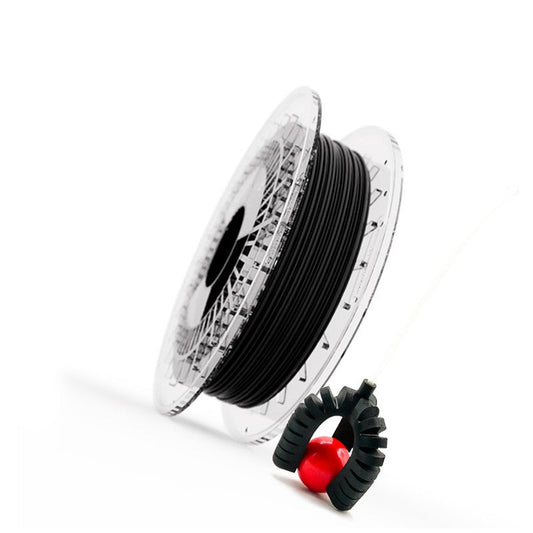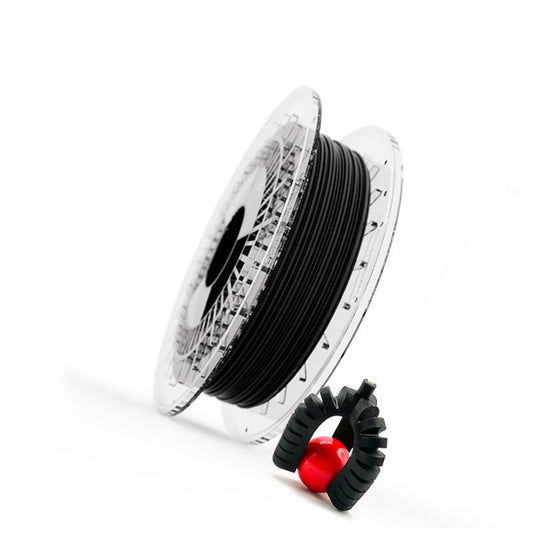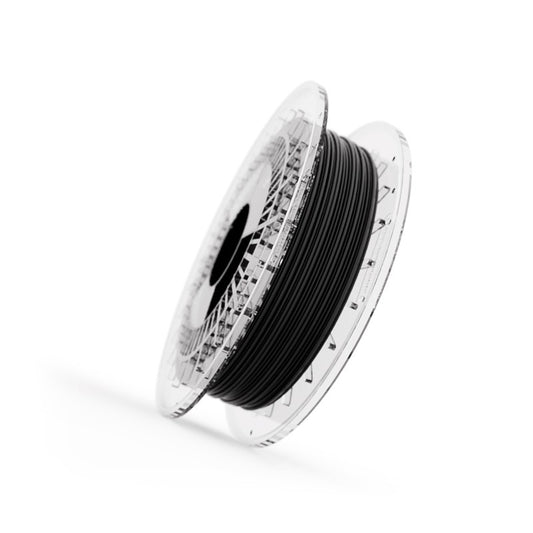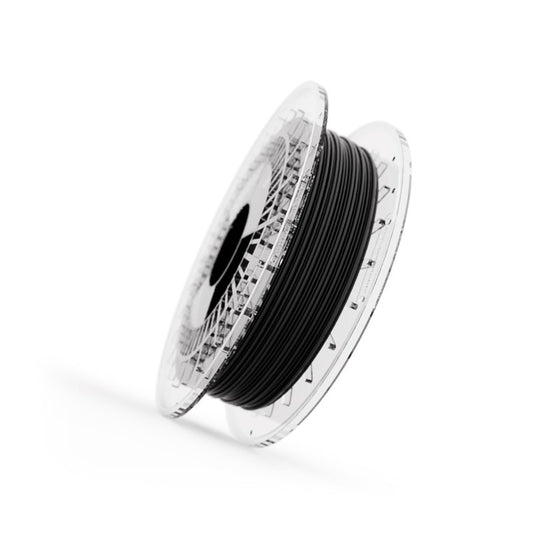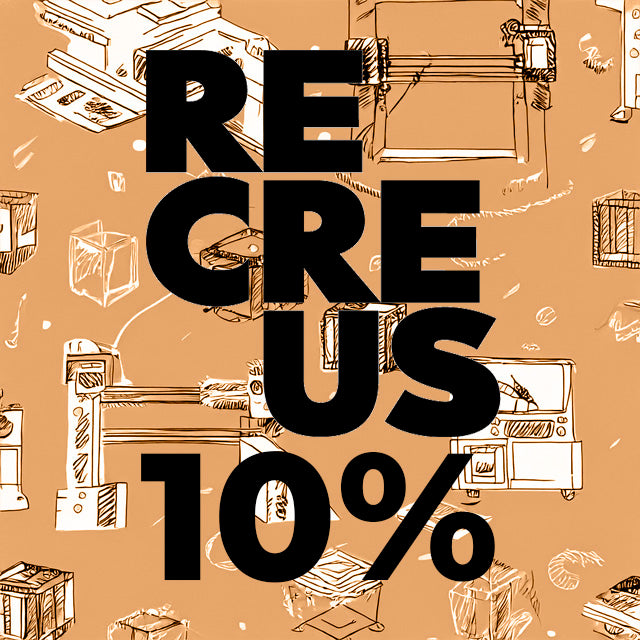What is 'Shore hardness'?
Understanding Shore Hardness: Your Guide to Flexible Filament Selection
Master the key concepts of Shore hardness to choose the perfect flexible filament for your 3D printing projects
Not all flexible filaments or TPU are created equal. With numerous options available and terms like Shore hardness, Shore A, and numerical values like 85, 90, or 82 frequently appearing in specifications, choosing the right material can be challenging.
In this comprehensive guide, we'll demystify Shore hardness, explain its importance in determining filament elasticity, and help you make informed decisions for your specific application needs. Let's dive into the world of flexible materials!

What is TPU flexible filament?
A TPU flexible filament is an elastomer material, a type of plastic, to which a series of additives are added and with which elastic parts can be created. Due to its properties, it is often used in many industries, being a very popular material in the fashion/textile sector.
As mentioned above, not all flexible filaments are the same, but within its range there is a wide variety and we can choose the type or level of flexibility or elasticity we want. If we are going to create a very elastic piece, we will need a flexible filament, but that is very elastic, or the other way around, within the range of flexible filament, we may want a piece with some flexibility, but not too much.
What is the 'shore hardness' scale?
Therefore, in order to measure or talk about the level of intensity of elasticity or flexibility that we require or need from a flexible filament to create a part, we resort to a measurement and scale that we call "shore hardness".
Thermoplastic elastomers are measured with this scale in Shore A and Shore D according to ISO 868. Shore hardness is a measure of the resistance of a material to penetration by a needle under a defined spring force. It is determined as a number from 0 to 100 on the A or D scales. The higher the number, the greater the hardness. The letter A is used for flexible types and the letter D for rigid types. However, the ranges overlap.
'Shore hardness': is a scale that measures the elastic hardness of materials based on the elastic reaction of the material when an object is dropped on it. It is determined as a number from 0 to 100 on scales A or D. The higher the number, the greater the hardness.
How many scales are there?
Several shore scales defined according to the different properties of the materials are used to measure shore hardness. In total, and according to ASTM D2240-00, there are 12 scales (A, B, C, D, DO, E, M, O, OO, OOO, OOO-S, and R), whose values range from 0 to 100 indicating the hardness of the material.
Shore 'A' and Shore 'D' Scales
The most convenient scale for measuring thermoplastic elastomer materials (or softer plastics) is the Shore A scale. The D scale is used to measure the hardest. Thus, a material with a Shore 82 hardness on the A scale (such as our Filaflex 82A 'Original' flexible filament) is roughly equivalent to a Shore 33 hardness on the D scale. Let's try another example. Filaflex 70A with Shore 70 hardness on the A scale, would be equivalent on the D scale to a Shore 23.
Table of equivalences between scales A and D
Next, we will see a table of equivalences between the A and D scales regarding all the Shore hardnesses of our flexible filaments from the Filaflex family.

In addition, in this graph we can also see the comparison between the Shore A and D hardness scales.
Relationship: Shore A to Shore D

Shore hardness values of all flexible filaments from the Filaflex family
At Recreus, we use the Shore A hardness scale to classify the flexible filaments in the Filaflex range, which allows us to determine their level of elasticity and know in which applications and/or parts they can be used.
Furthermore, at Recreus, we have the widest and most varied catalog of flexible 3D printing filaments with different Shore hardness values. We not only offer filaments with different elasticities based on their Shore hardness, but we also have special varieties that make them unique and incredible for any 3D printing project. These varieties include conductive properties, additives that help purify the environment, and 100% recycled flexible filaments for more sustainable projects.
Specifically, in the Filaflex family of flexible filaments, you can find the following types of materials based on their Shore hardness:
- Reciflex: It is a 100% recycled flexible filament with a Shore hardness ranging from 96A to 98A.
- Filaflex 95A, 'Medium-Flex': Semi-flexible, with Shore hardness of 95A, very easy-to-print flexible filament compatible with 100% of 3D printers. 500% elongation.
- Filaflex Conductive: With Shore hardness of 92A, ideal for manufacturing electrically conductive parts or components and wearable devices.
- Filaflex SEBS: TPE rubber base, Shore hardness of 90A, strong and durable, can be flexed and bent back to its original shape.
- Filaflex 82A, 'Original': Star filament with Shore hardness of 82A and 650% elongation. Best-selling flexible filament.
- Filaflex Purifier: Shore hardness of 82A, helps mitigate pollution and purify the environment.
- Filaflex FOAMY: Shore hardness of 78A, can reach 51A with dynamic foaming technology.
- Filaflex 70A, 'Ultra-Soft': Shore hardness of 70A, highly elastic with 900% elongation.
- Filaflex 60A, 'Pro': Shore hardness of 60A, most elastic and smooth printable filament with 950% elongation.
*Elongation: It is the percentage of stretching until the material breaks, as long as its elastic limit is not exceeded.
Elongation of filaments of the Filaflex family

Sample Pack of the Filaflex family. Test all the hardness of the range!
Due to the wide demand and curiosity to test the hardness of Filaflex, we created the sample pack of the Filaflex family. Available in our online store in both diameters (1.75 mm and 2.85 mm), including a 50 gr sample of each filament:
- 1 sample of Filaflex 95A (black color)
- 1 sample of Filaflex 82A (grey color)
- 1 sample of Filaflex 70A (transparent color)
- 1 sample of Filaflex 60A (white color)
It is the perfect product so that you can test the entire range of Filaflex without having to assume the cost of a larger coil to test with your printer.
Now that you know what 'Shore hardness' means, what Filaflex hardness do you want to print?





